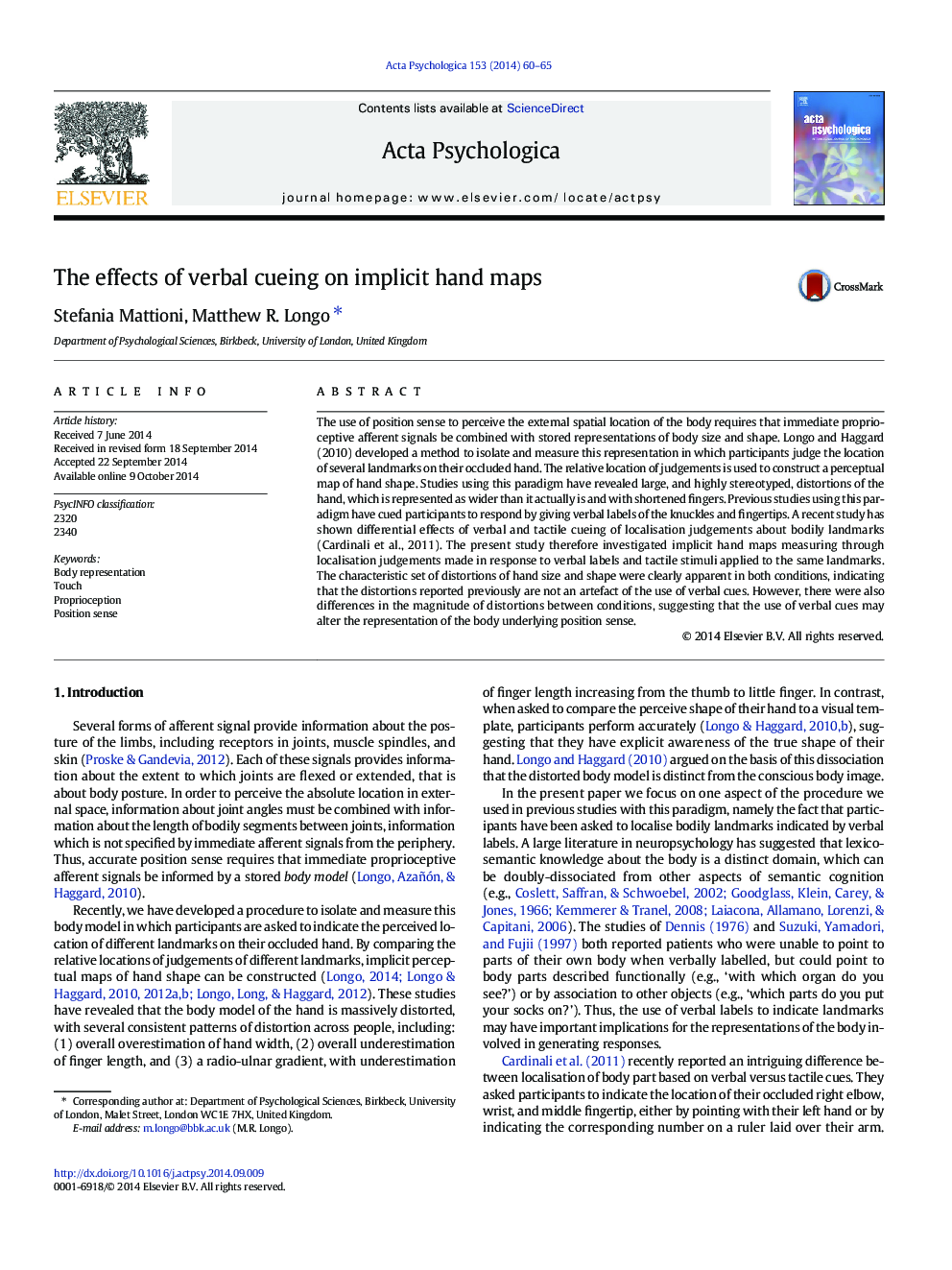| کد مقاله | کد نشریه | سال انتشار | مقاله انگلیسی | نسخه تمام متن |
|---|---|---|---|---|
| 919764 | 1473605 | 2014 | 6 صفحه PDF | دانلود رایگان |
• Previous studies reported highly distorted body representations for position sense.
• Similarly distorted perceptual hand maps were found for verbal and tactile cueing.
• Tactile and verbal maps did differ in terms of magnitude of distortions.
The use of position sense to perceive the external spatial location of the body requires that immediate proprioceptive afferent signals be combined with stored representations of body size and shape. Longo and Haggard (2010) developed a method to isolate and measure this representation in which participants judge the location of several landmarks on their occluded hand. The relative location of judgements is used to construct a perceptual map of hand shape. Studies using this paradigm have revealed large, and highly stereotyped, distortions of the hand, which is represented as wider than it actually is and with shortened fingers. Previous studies using this paradigm have cued participants to respond by giving verbal labels of the knuckles and fingertips. A recent study has shown differential effects of verbal and tactile cueing of localisation judgements about bodily landmarks (Cardinali et al., 2011). The present study therefore investigated implicit hand maps measuring through localisation judgements made in response to verbal labels and tactile stimuli applied to the same landmarks. The characteristic set of distortions of hand size and shape were clearly apparent in both conditions, indicating that the distortions reported previously are not an artefact of the use of verbal cues. However, there were also differences in the magnitude of distortions between conditions, suggesting that the use of verbal cues may alter the representation of the body underlying position sense.
Journal: Acta Psychologica - Volume 153, November 2014, Pages 60–65
